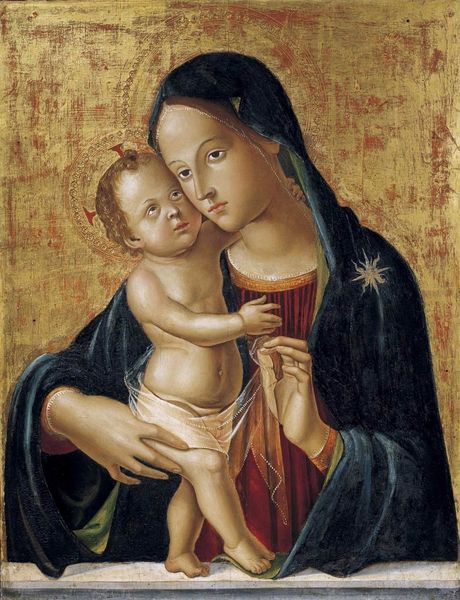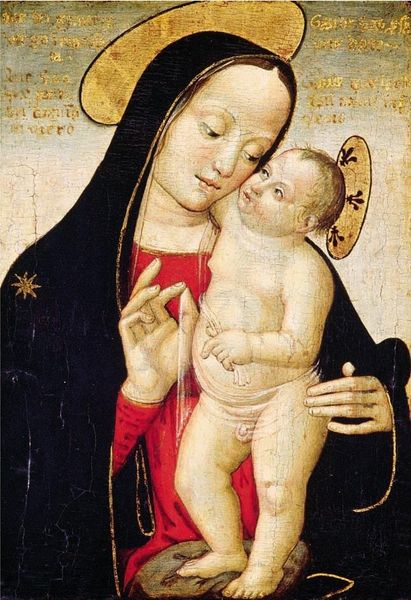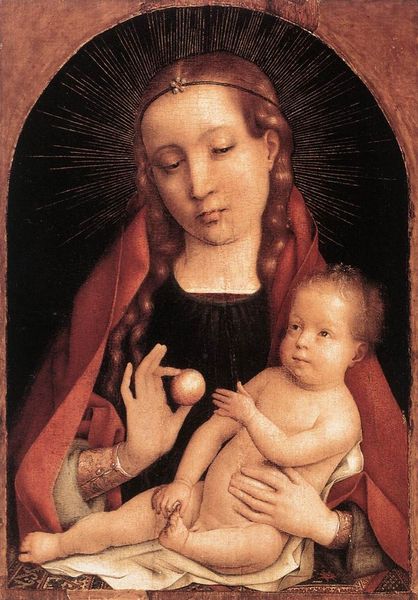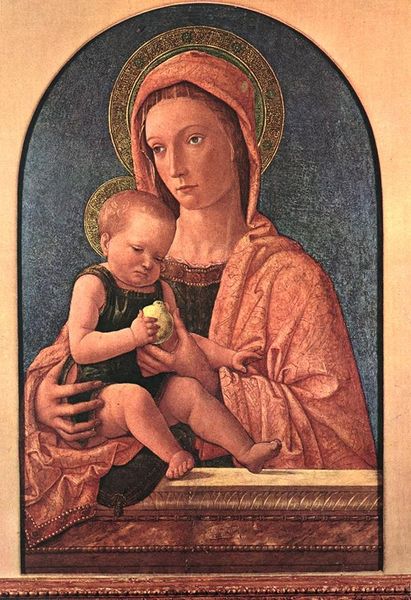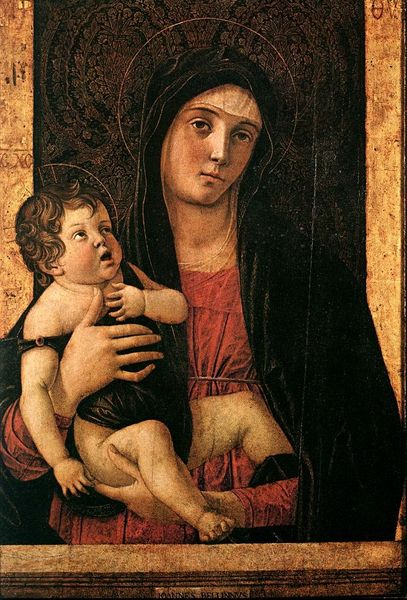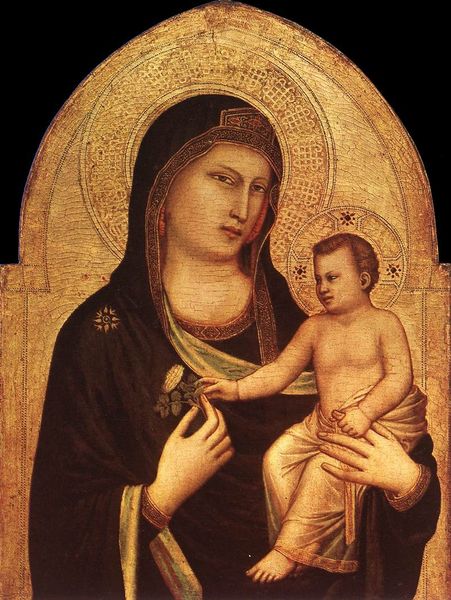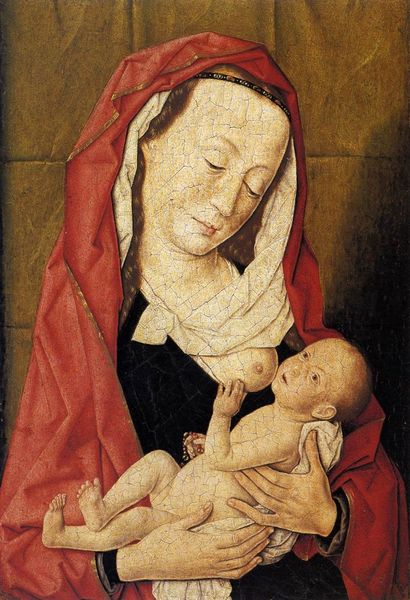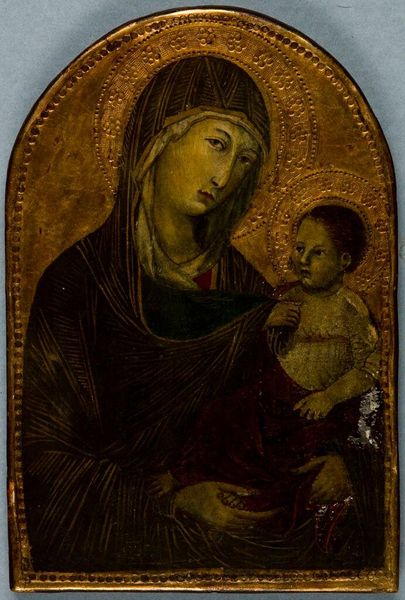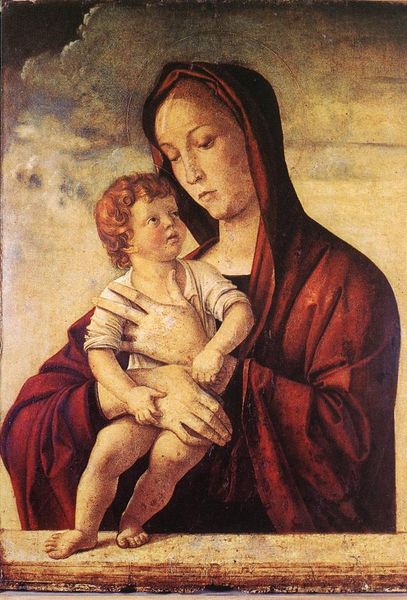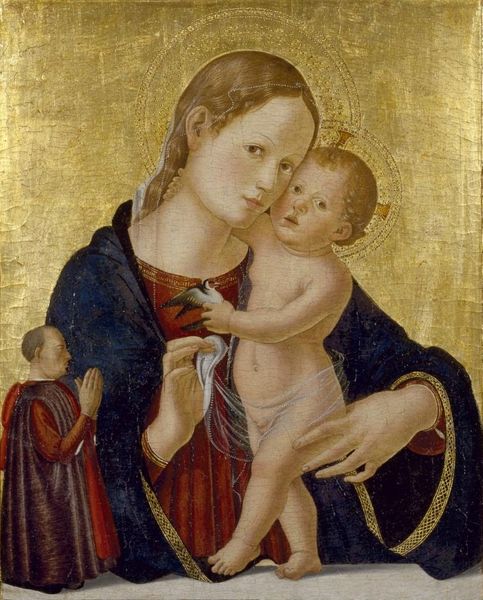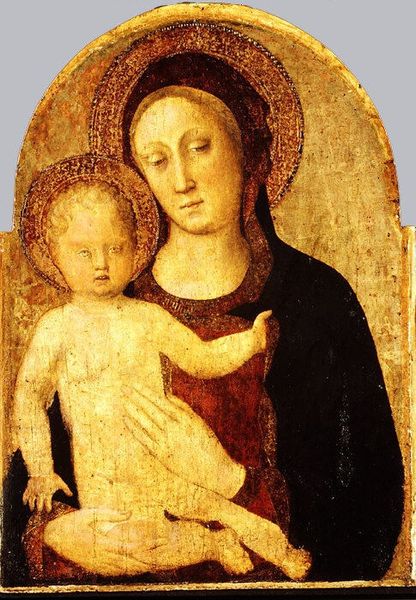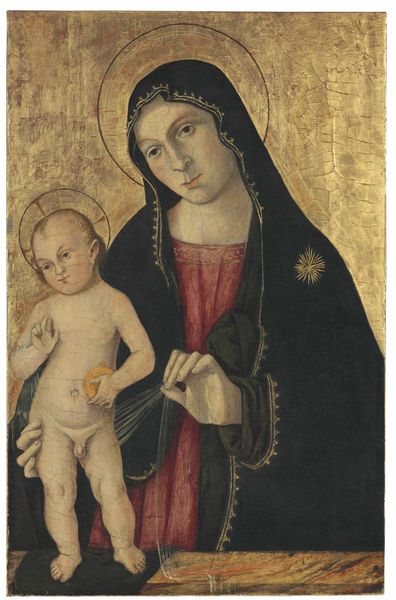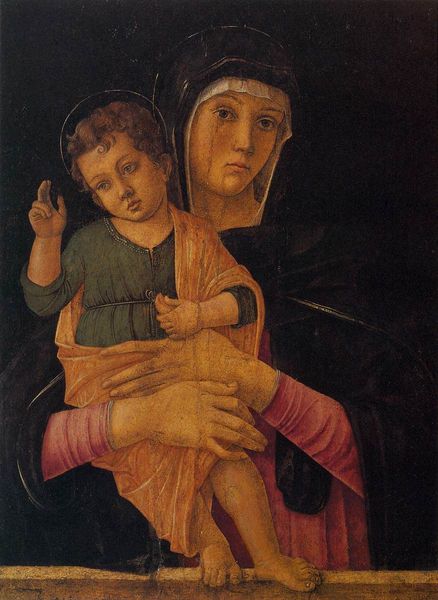
painting, oil-paint
#
portrait
#
painting
#
oil-paint
#
figuration
#
oil painting
#
italian-renaissance
Copyright: Public domain
Antoniazzo Romano created this 'Madonna and Child' in Perugia around 1480, using tempera on a wood panel. Tempera, a process of pigment mixed with egg yolk, dries quickly, demanding precision and speed. This was typical for panel paintings from the 13th to 15th century, before oil paints gained popularity. Its matte finish gives the painting a distinct look, different from the glossy finish you'd see in later oil paintings. Consider the gilding used for the background and halos. Applying gold leaf was painstaking, requiring careful layering and burnishing. The labor involved in preparing the panel, grinding pigments, and applying the paint reflects the value placed on religious art in that era. It wasn't just about artistic skill, but the devotion and time invested. Looking closely, you can see the artist's hand in the careful brushstrokes. This direct connection to the artist's labor underscores that while faith may be timeless, its material expression is deeply rooted in the era's social and economic realities. Recognizing these aspects brings us closer to the artwork's full meaning, bridging the divide between fine art and the craft behind it.
Comments
No comments
Be the first to comment and join the conversation on the ultimate creative platform.
